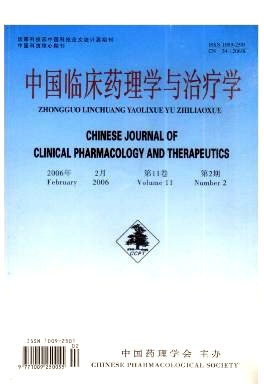CPU0213 ameliorates vascular activity of septic shock rats by suppressing ET system and NF-κB pathway
HE Hai-bo , YUAN Sheng-hua , DAI De-zai , JI Min
2006, 11(2):
145-152.
 Asbtract
(
101 )
Asbtract
(
101 )
 PDF (308KB)
(
238
)
References |
Related Articles |
Metrics
PDF (308KB)
(
238
)
References |
Related Articles |
Metrics
AIM:To study the amelioration of blood vessel and mechanism of a non-selective ETA ETB receptor antagonist (CPU0213)on cecal ligation and puncture (CLP)rats .METHODS :After 8 hours at CLP , the rats were subcutaneouly administered with CPU0213 (30 mg·kg -1 , bid ×3 d).During the time , the changes of survival, hemodynamic parameter (mean arterial pres- sure :MAP, HR :heart rate), indexes of important or- gans and weight of peritoneal exudates were reviewed , plasma ET-1 and serum iNOS , GSH-PX , SOD , MDA were detected , simultaneously , the activity of aorta pecto- ralis and was registered , the mRNA expressions of NF- κB , TNF-α, iNOS , ECE (endothelin converting enzyme), preproET-1 , ETA , ETB receptor and the activated NF-κB protein amount of mesenteric blood vessel were detected . RESULTS:In the septic model group , the MAP and survival rate decreased (P <0 .01);the HR , indexes of important organs and weight of peritoneal exudates were increased significantly (P <0 .01);blood vessel activity of aorta pectoralis (in vivo and in vitro)were decreased ; The levels of ET-1 , iNOS and ROS in serum were mark- edly increased (P <0 .01);the mRNA levels of TNF-α, iNOS , preproET-1 , ECE , ETA R and ETBR in mesenteric blood vessel were enhanced significantly (P <0 .01);the protein amount of activated NF-κB was increased (P < 0 .01)versus sham-operated group .All of these changes were reversed after CPU0213 administration .CONCLU- SION:CPU0213 can lessen the impairment of vascular smooth muscle cell, decrease effusion , recover vascular normal activity , degrade indexes of organs, and elevate survival rate by suppressing the ET system and NF-κB pathway .


